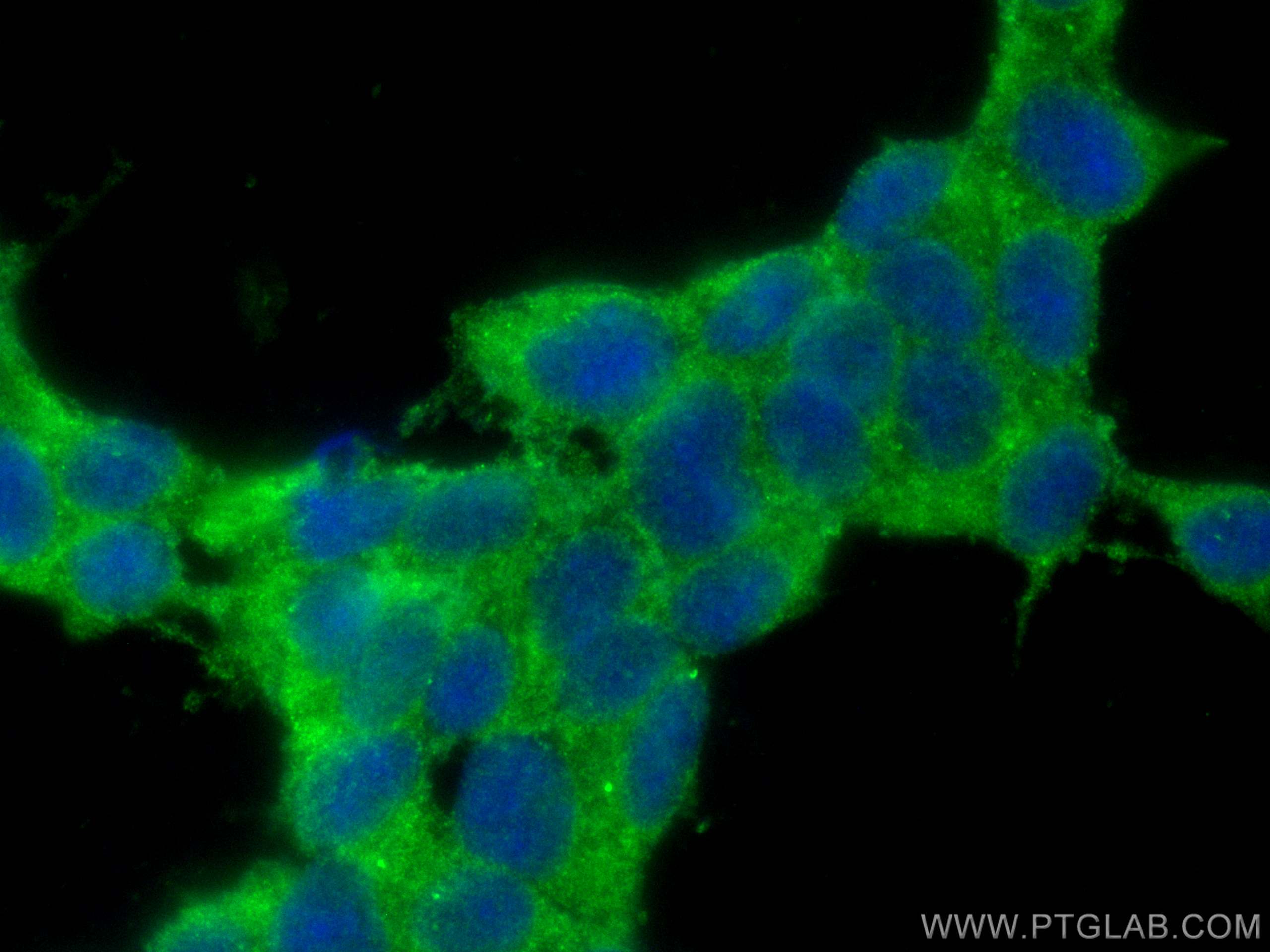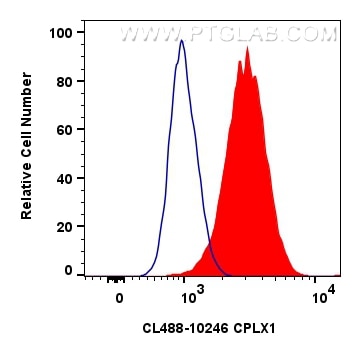Anticorps Polyclonal de lapin anti-CPLX1
CPLX1 Polyclonal Antibody for IF/ICC, FC (Intra)
Hôte / Isotype
Lapin / IgG
Réactivité testée
Humain, rat, souris
Applications
IF/ICC, FC (Intra)
Conjugaison
CoraLite® Plus 488 Fluorescent Dye
N° de cat : CL488-10246
Synonymes
Galerie de données de validation
Applications testées
| Résultats positifs en IF/ICC | cellules SH-SY5Y, |
| Résultats positifs en FC (Intra) | cellules SH-SY5Y, |
Dilution recommandée
| Application | Dilution |
|---|---|
| Immunofluorescence (IF)/ICC | IF/ICC : 1:50-1:500 |
| Flow Cytometry (FC) (INTRA) | FC (INTRA) : 0.80 ug per 10^6 cells in a 100 µl suspension |
| It is recommended that this reagent should be titrated in each testing system to obtain optimal results. | |
| Sample-dependent, check data in validation data gallery | |
Informations sur le produit
CL488-10246 cible CPLX1 dans les applications de IF/ICC, FC (Intra) et montre une réactivité avec des échantillons Humain, rat, souris
| Réactivité | Humain, rat, souris |
| Hôte / Isotype | Lapin / IgG |
| Clonalité | Polyclonal |
| Type | Anticorps |
| Immunogène | CPLX1 Protéine recombinante Ag0387 |
| Nom complet | complexin 1 |
| Masse moléculaire calculée | 15 kDa |
| Poids moléculaire observé | 15-20 kDa |
| Numéro d’acquisition GenBank | BC002471 |
| Symbole du gène | CPLX1 |
| Identification du gène (NCBI) | 10815 |
| Conjugaison | CoraLite® Plus 488 Fluorescent Dye |
| Excitation/Emission maxima wavelengths | 493 nm / 522 nm |
| Forme | Liquide |
| Méthode de purification | Purification par affinité contre l'antigène |
| Tampon de stockage | PBS with 50% glycerol, 0.05% Proclin300, 0.5% BSA |
| Conditions de stockage | Stocker à -20 °C. Éviter toute exposition à la lumière. Stable pendant un an après l'expédition. L'aliquotage n'est pas nécessaire pour le stockage à -20oC Les 20ul contiennent 0,1% de BSA. |
Informations générales
Complexin 1 (CPLX1) is a member of the complexin/synaphin gene family, which are cytosolic proteins that function in synaptic vesicle exocytosis. Complexins are enriched in neurons where they colocalize with syntaxin and SNAP-25. Complexins bind weakly to syntaxin alone and not at all to synaptobrevin and SNAP-25, but strongly to the SNAP receptor-core complex composed of these three molecules. Compexins also compete with alpha-SNAP for binding to the core complex but not with other interacting molecules, including synaptotagmin I, and regulate the sequential interactions of alpha-SNAP and synaptotagmins with the SNAP receptor during exocytosis. CLPX1 binds to the SNAP receptor complex and disrupts it, leading to the release of transmitters. Alterations of complexins may contribute to the molecular substrate for abnormalities of neural connectivity in severe mental disorders.
Protocole
| Product Specific Protocols | |
|---|---|
| IF protocol for CL Plus 488 CPLX1 antibody CL488-10246 | Download protocol |
| FC protocol for CL Plus 488 CPLX1 antibody CL488-10246 | Download protocol |
| Standard Protocols | |
|---|---|
| Click here to view our Standard Protocols |



